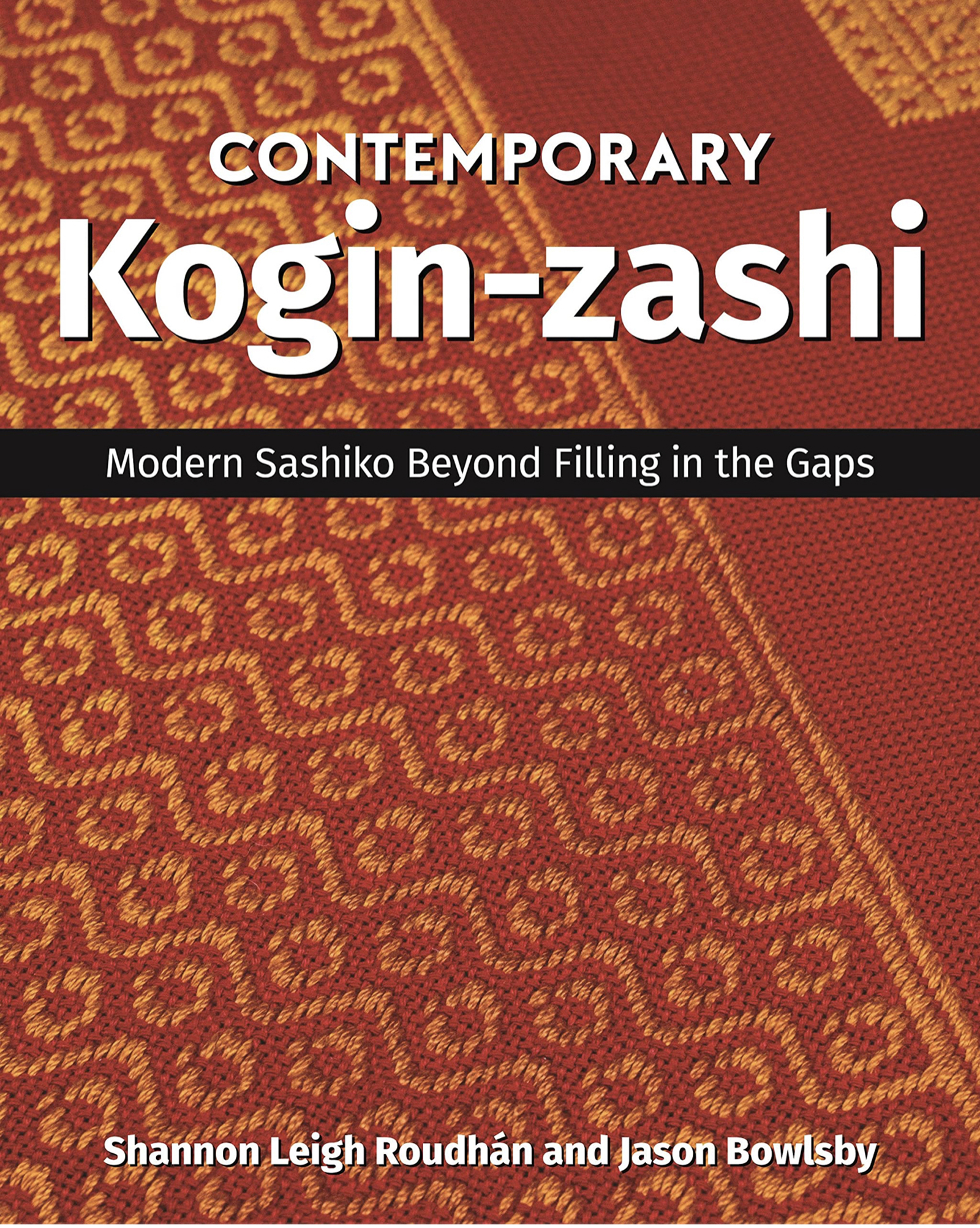Sashiko Pros Shannon & Jason Celebrate Their New Book
Posted by Shannon Leigh Roudhán and Jason Bowlsby on Jul 15th 2022
Hey there folx! Welcome to our mini takeover of the C&T blog. The folx at C&T have graciously given us the opportunity to talk to you all about our NEW book coming out later this year: Contemporary Kogin-zashi: Modern Sashiko Beyond Filling in the Gaps.
Us

First, a little about us: I’m Shannon, and I’m Jason (that’s us over there in the photo). We are designers, creators, authors, and all-around enthusiasts of embracing our creative chaos. We live in Seattle, Washington and have been married for 27 years.

We like long walks on the beach, pina coladas, and getting caught in the… oh… wrong bio. Quilting, sewing, crochet, knitting, spinning, garment design, gardening, teaching, photography, writing, research, graphic design, textile arts, fiber art, sitting in our garden, exploring along the shores of the Salish Sea, cooking, eating… that’s us. Mostly. You can find out more about us on our website at shannonandjason.com and on our social media pages (which you can find on our website) so let’s get on with this new book we are so excited about!
What’s this new book we are so excited about?
Our last book, Boro & Sashiko: Harmonious Imperfection, highlighted both hitomezashi and moyouzashi forms of sashiko, however our initial research also included a third form of sashiko: kogin-zashi. Although kogin-zashi is classified as a major form of sashiko like the other two from our previous book, it is as different from those other forms as night and day. That fact (along with the need for a sane page count… go figure) led us to cut most of the information, research, and projects about kogin-zashi from that book. We moved almost everything into a “cutting room floor” folder in our writing app leaving only a one-page synopsis about kogin appearing in that book. As major obsessive information hounds (don’t judge, how many browser windows do you have open? How many bookshelves and stacks of books?), this was a tough call for us but, ultimately, a necessary decision that better focused that first book. That said…
As is often the case for us, the ideas generated while researching, practicing, and exploring a technique leads us to a future project or possibly a series of classes. Not always, but sometimes, just sometimes, when all those elements collide in such a way that we find ourselves as excited about a subject as we are about kogin, we’re able to compile all those seemingly random goodies into a fully fleshed-out book project. As that “cutting room floor” folder grew, filling up with fascinating historical data, exciting ideas about how we could bring this craft to the hands of modern makers, and interesting projects for curious makers, this newest book took its first breath. And now, here it is! Welcome to Contemporary Kogin-zashi: Modern Sashiko Beyond Filling in the Gaps.
A little context for the content.
Alrighty… let’s back up here for just a sec. If y’all haven’t picked up our last book, Boro & Sashiko: Harmonious Imperfection (go ahead, we’ll wait while you click the order button), you are probably wondering what sashiko is. While you wait for your copy to arrive, we’ll give you the cliff notes version: Sashiko is a form of fabric mending and reinforcing with thread that developed in Japan during the Edo period (1615 – 1868 C.E.). Due to socio-economic and political oppression of the common folx, most people wove their own cloth and made their own clothing and necessities for their home and work. With minimal resources available, folx wore only the clothing they already had, patching and repairing everything as needed. As is usually the case, necessity was the mother of… sashiko: Sashiko was used to mend, reinforce, and beautify this rustic handwoven fabric. Combined with boro patchwork, textiles from this period took on a richness and texture that, while born from necessity and practicality, makes them treasures and works of textile art today.
Hitomezashi and moyouzashi style sashiko stitches hold fabric fragments together by stitching THROUGH the fabric layers, occasionally stitching patterns directly ON TO individual pieces of fabric with a long, sharp needle meant to pierce the fabric. Kogin-zashi is different in that it works IN one layer of existing fabric, making it stronger and warmer by weaving thread between the warp and weft threads of the cloth, i.e., the needle does not pierce the fabric.
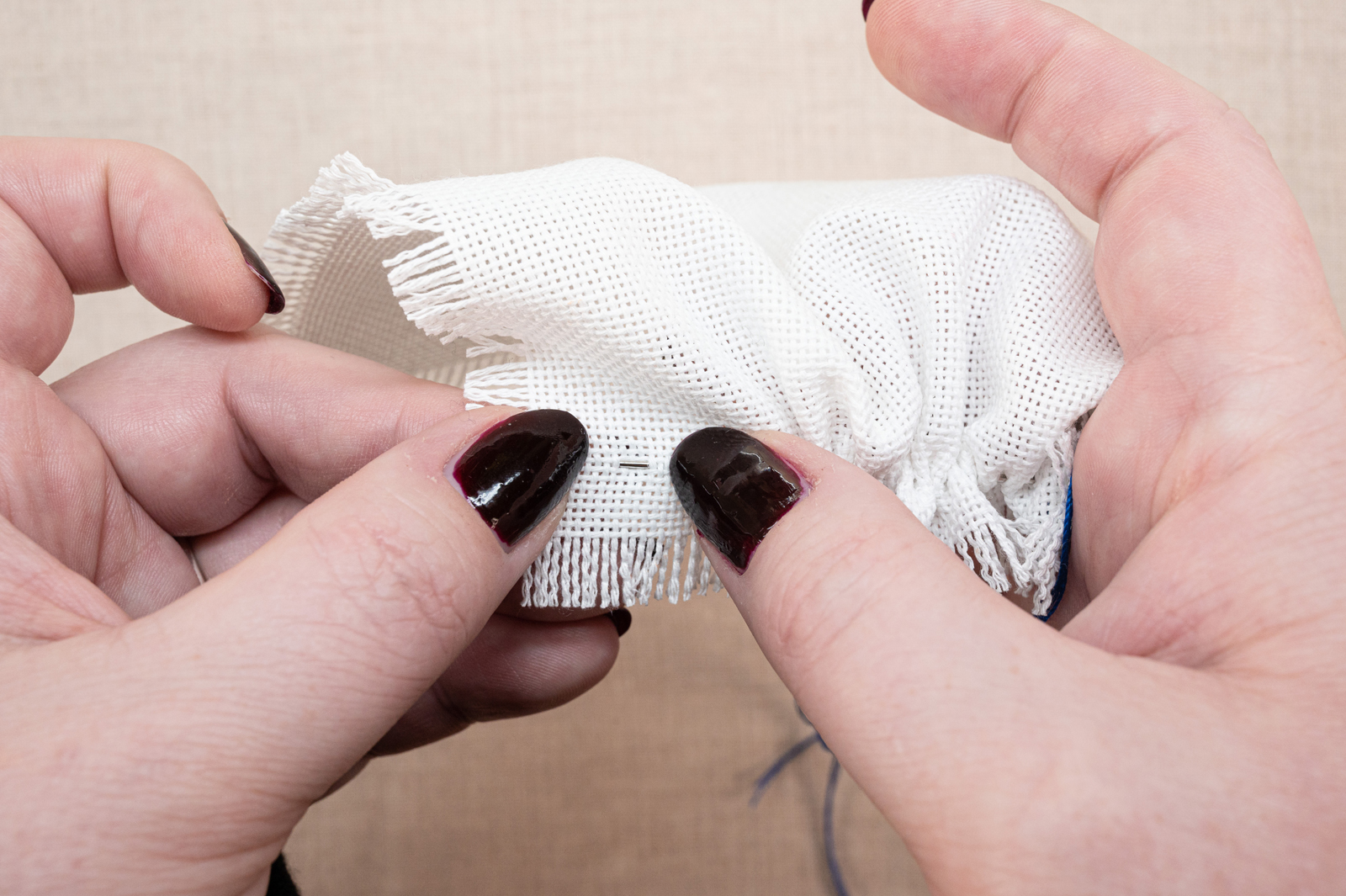
Kogin motifs, called modoko, are created by weaving a vertical thread through base fabric, working the needle over and under a counted number of threads, essentially following the spaces created by the intersection of the horizontal (warp) and vertical (weft) of the loosely woven textile… truly filling in the gaps in the handwoven fabric. As you can imagine, the finished product is a denser, heartier fabric, allowing more protection from the elements. It also beautifies the final product with intricate, geometric designs that are truly stunning to behold. Looking at some of these original pieces, you can see why we fell in love.
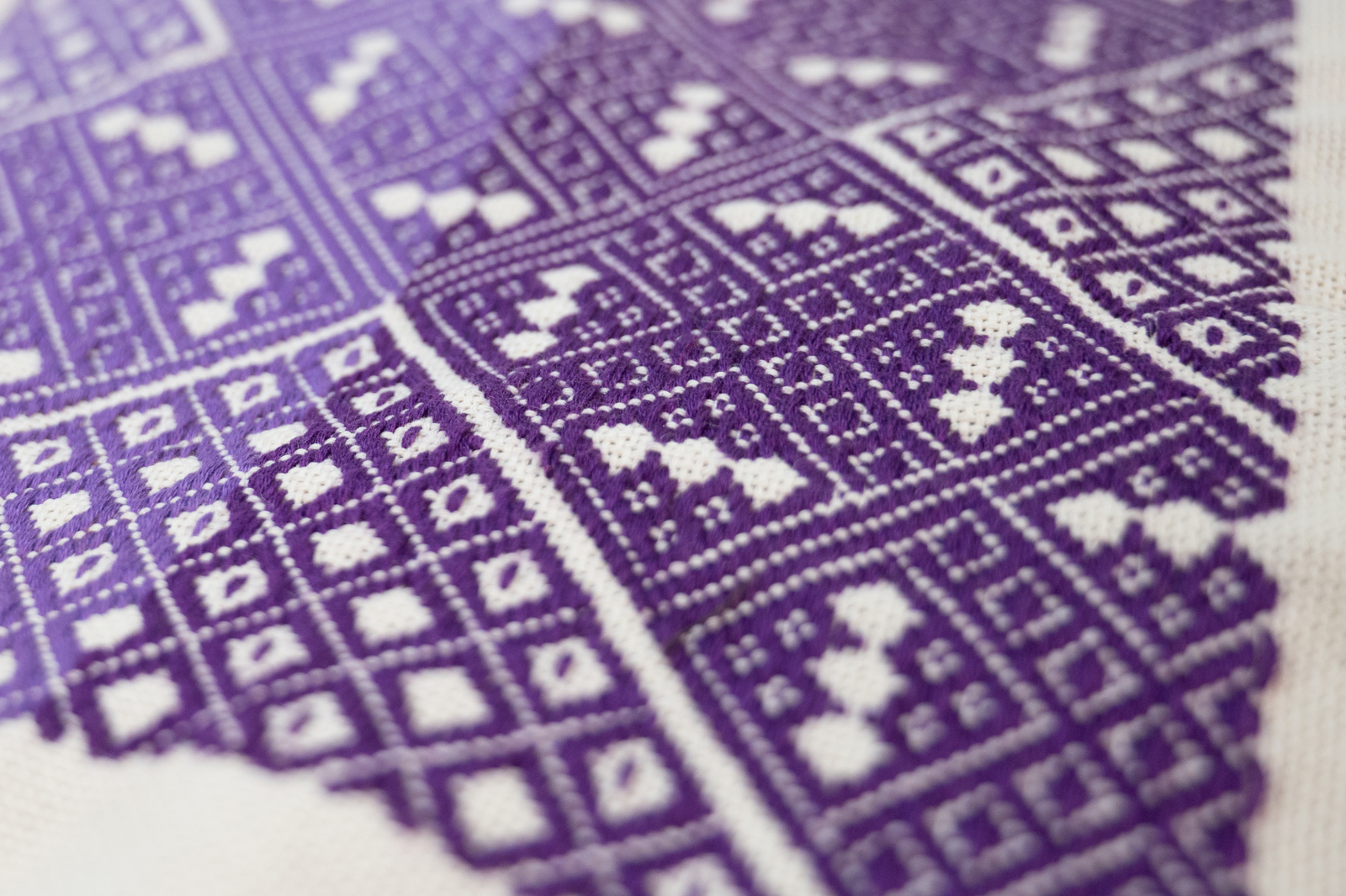
Larger kogin-zashi designs are created from motifs or modoko. Some modoko are as small as 3 stitches across and 3 lines high while others are much more complicated taking over 50 stitches and rows. Placing various modoko together in tiled and stacked designs or using singular modoko together is what creates the overall beauty of this deceptively simple craft. Once you know the basic modoko and can put them together and the sky truly is the limit!
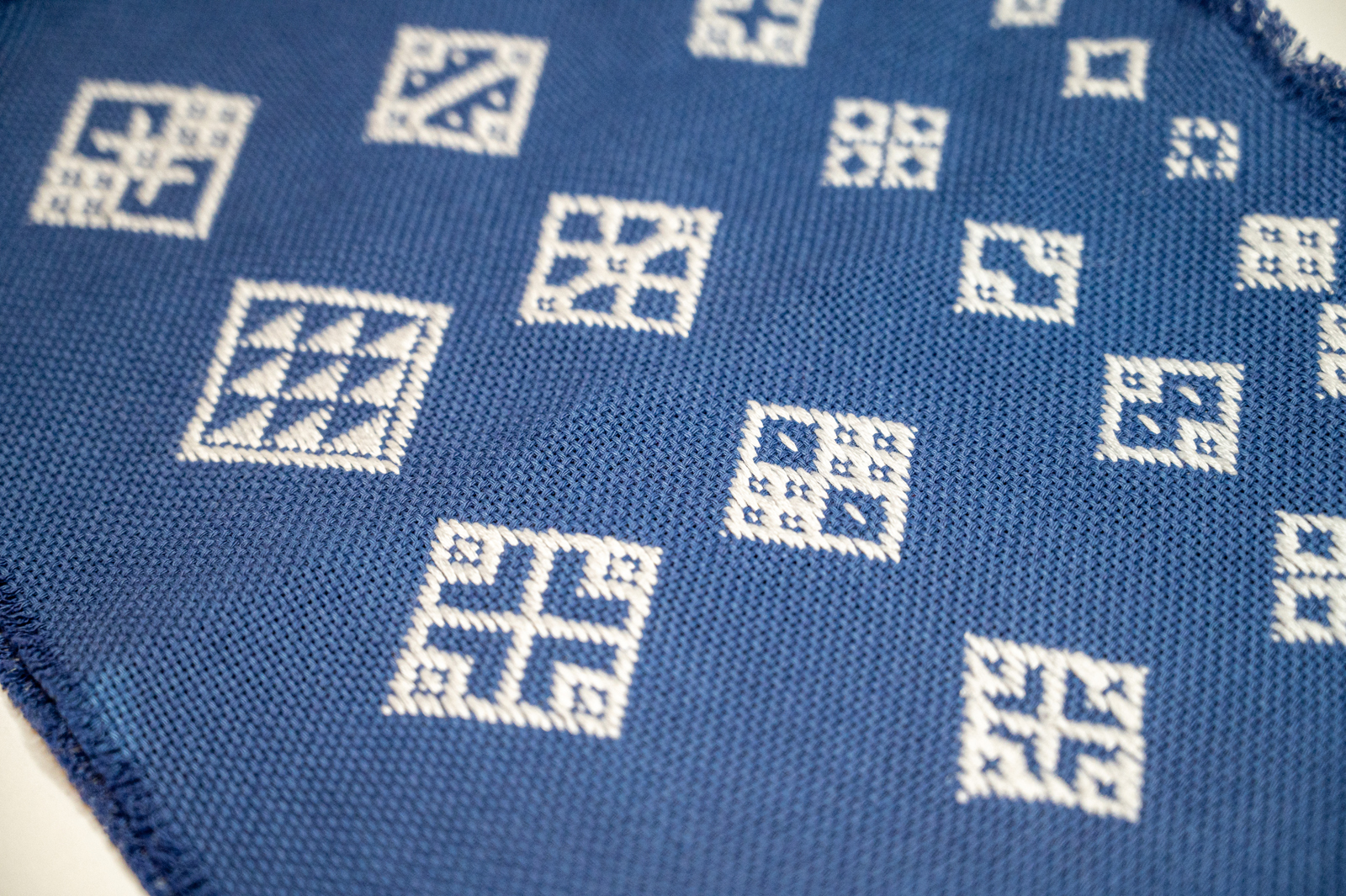
Okay… so now that you have a little context for the content, let’s dive into the content of Contemporary Kogin-zashi and how we organized our book. Onward!
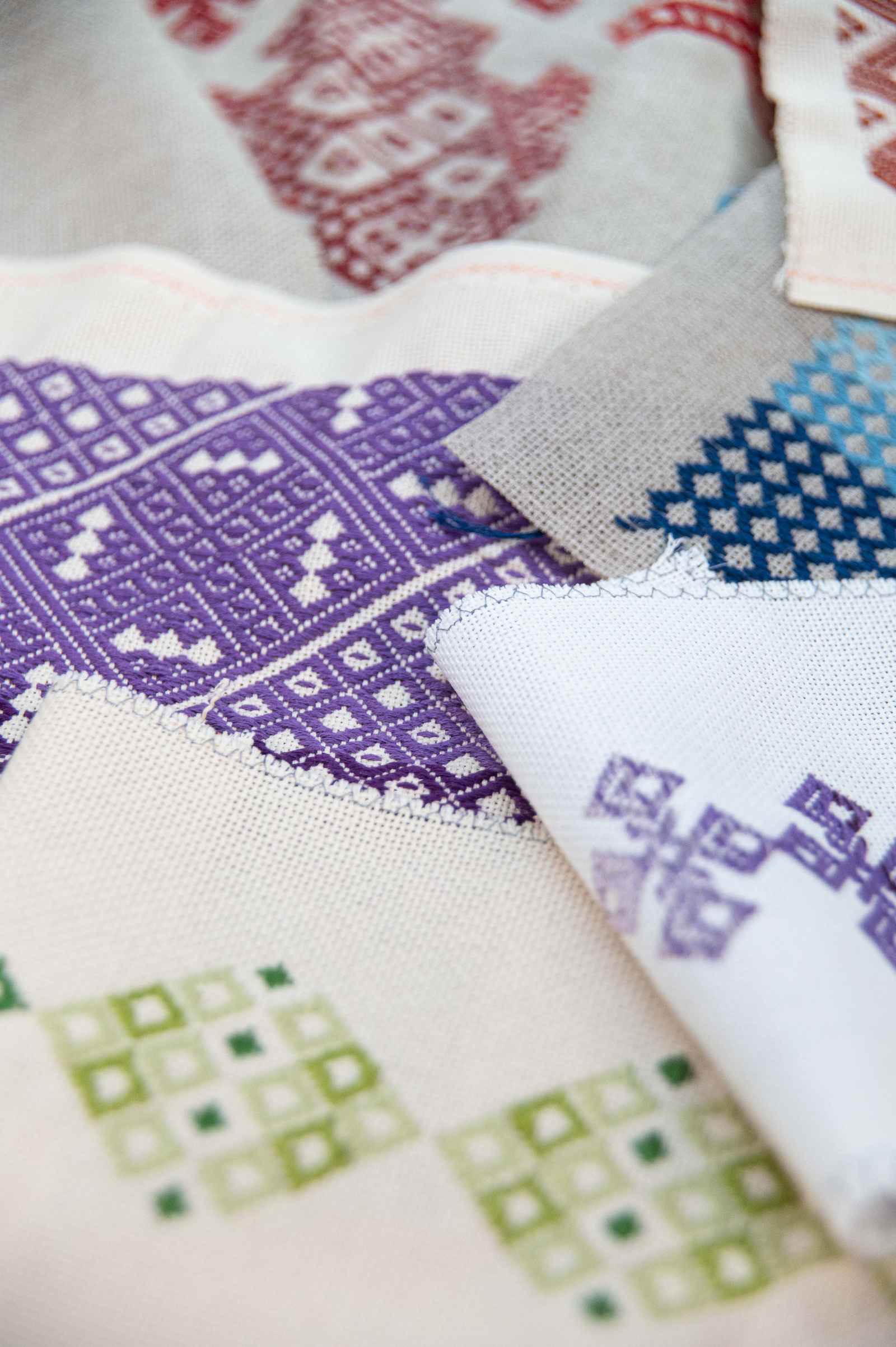
A look inside
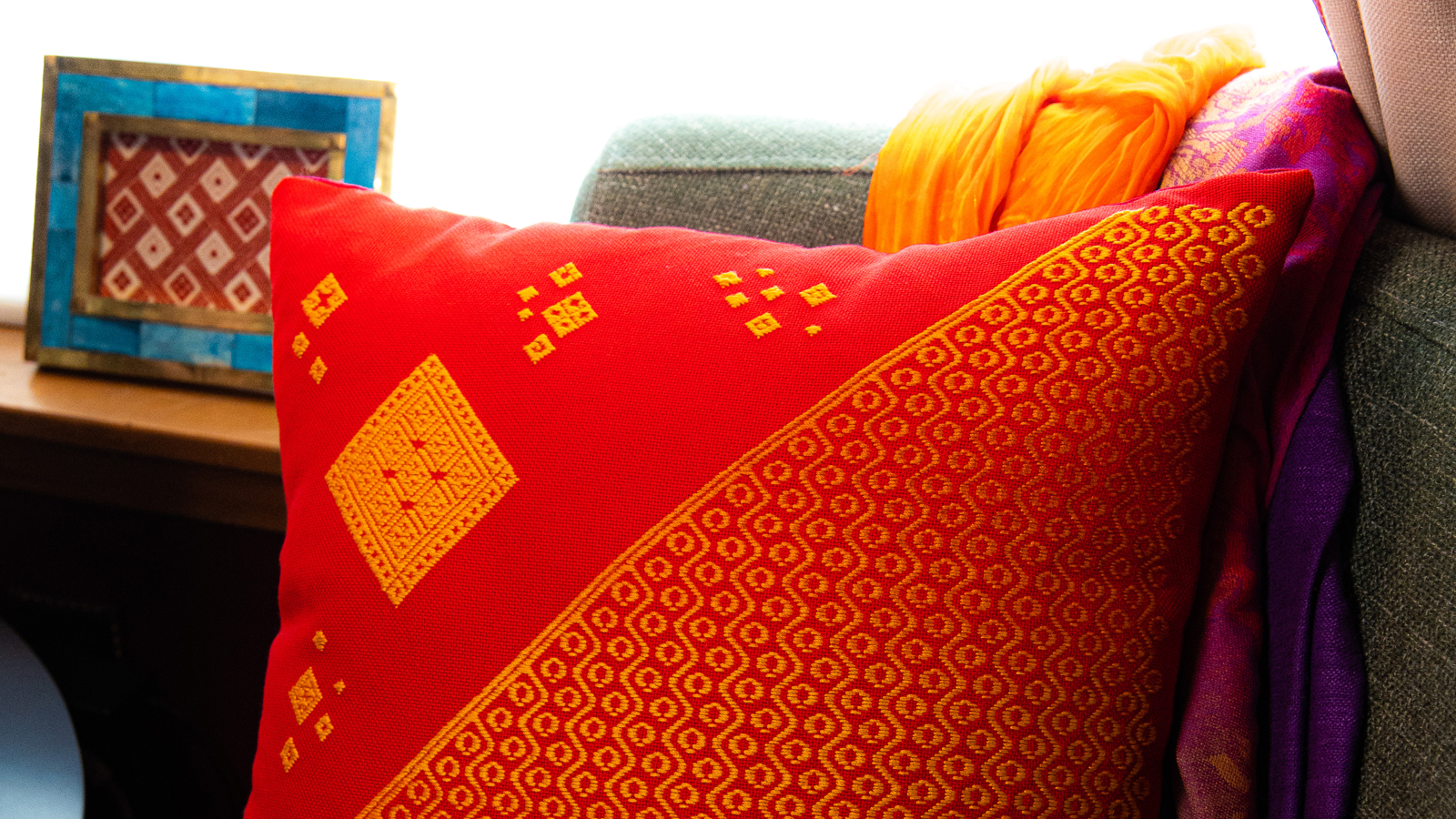
Contemporary Kogin-zashi includes over 40 basic and secondary modoko recognized by the Hirosaki Kogin Institute - the authority on collecting, cataloguing, and promoting kogin-zashi. We chose these initial modoko from their database because one cannot create kogin-zashi without first learning the basic elements and understanding how those elements combine to make larger designs. We picked the modoko we believe best taught these foundation elements then added a few of our favorites from the archive to expand your foundations. Next, we show you how to combine, stack, and swap modoko to make designs that you like. Lastly, yes, we did create some of our own unique kogin designs for you to play with. The result is a progressive method for learning kogin-zashi that will familiarize you with the elemental techniques while you create beautiful textile art pieces.
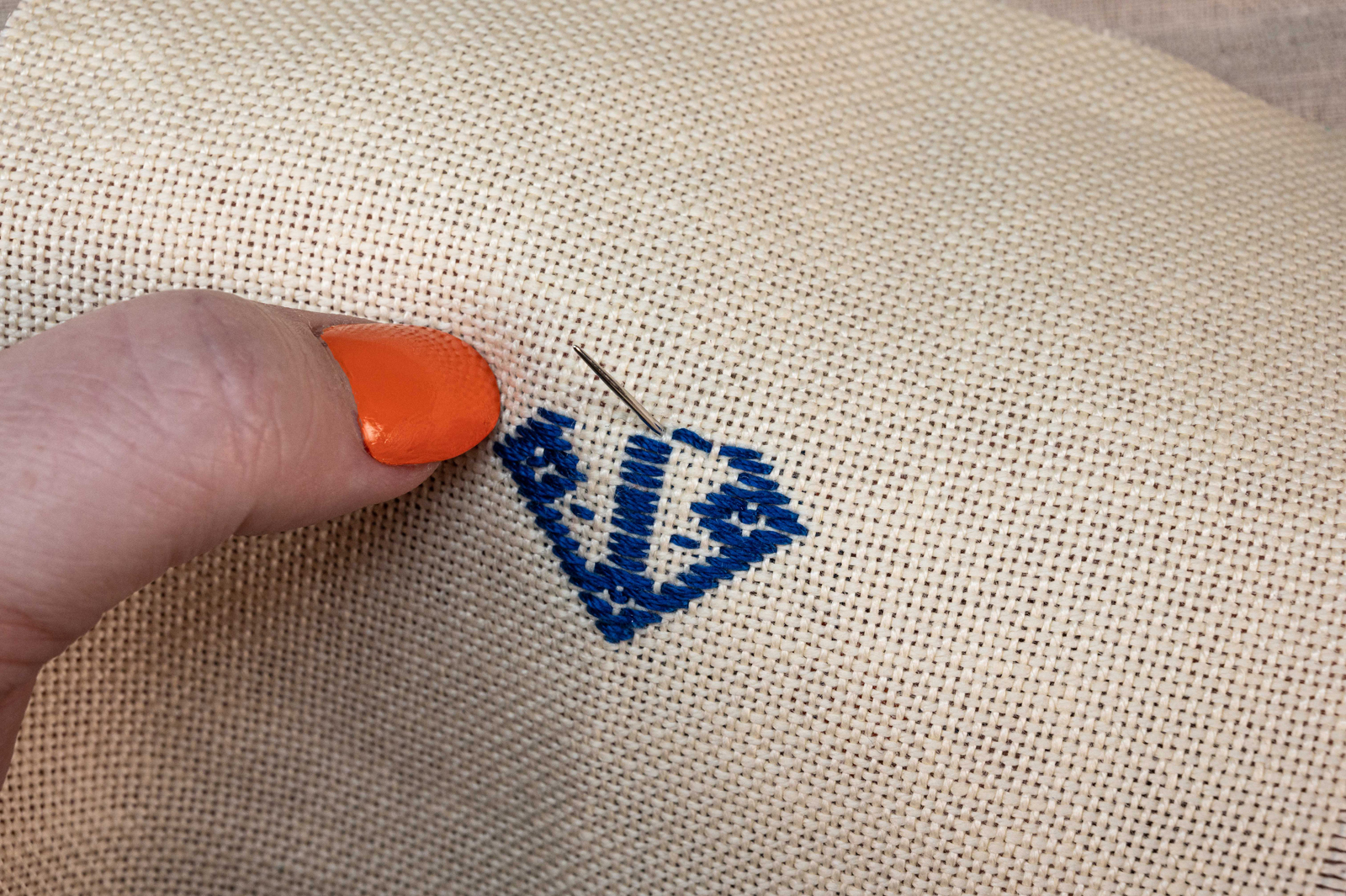
As we did in Boro and Sashiko: Harmonious Imperfection (was that a delivery we heard at your door? Go ahead and grab it… we’ll wait), we strove to include a large amount of training into the art of “handling the needle”—the Japanese term “unshin”. Learning to handle the need correctly is a vital part of our workshops so we would have been remis to leave it out of any teaching text. Good technique will give you, the stitcher, a better result right out of the gate so if you are new to this form of stitching or it’s been a while since you took a class with us, don’t skip this section. You’ll be much happier as you move through the rest of the book. In Contemporary Kogin-zashi we include instructional photos along with easy-to-follow directions for making your first stitches, handling the fabric, choosing thread, and of course reading patterns. In that chapter, we also include a small project for you to jump right into, since the only way to hone your skills is to dive right in and put your needle in some fabric. Plus, if you’re like us, you want to get on to the good part of creating something FAB even while you are learning. We see you!
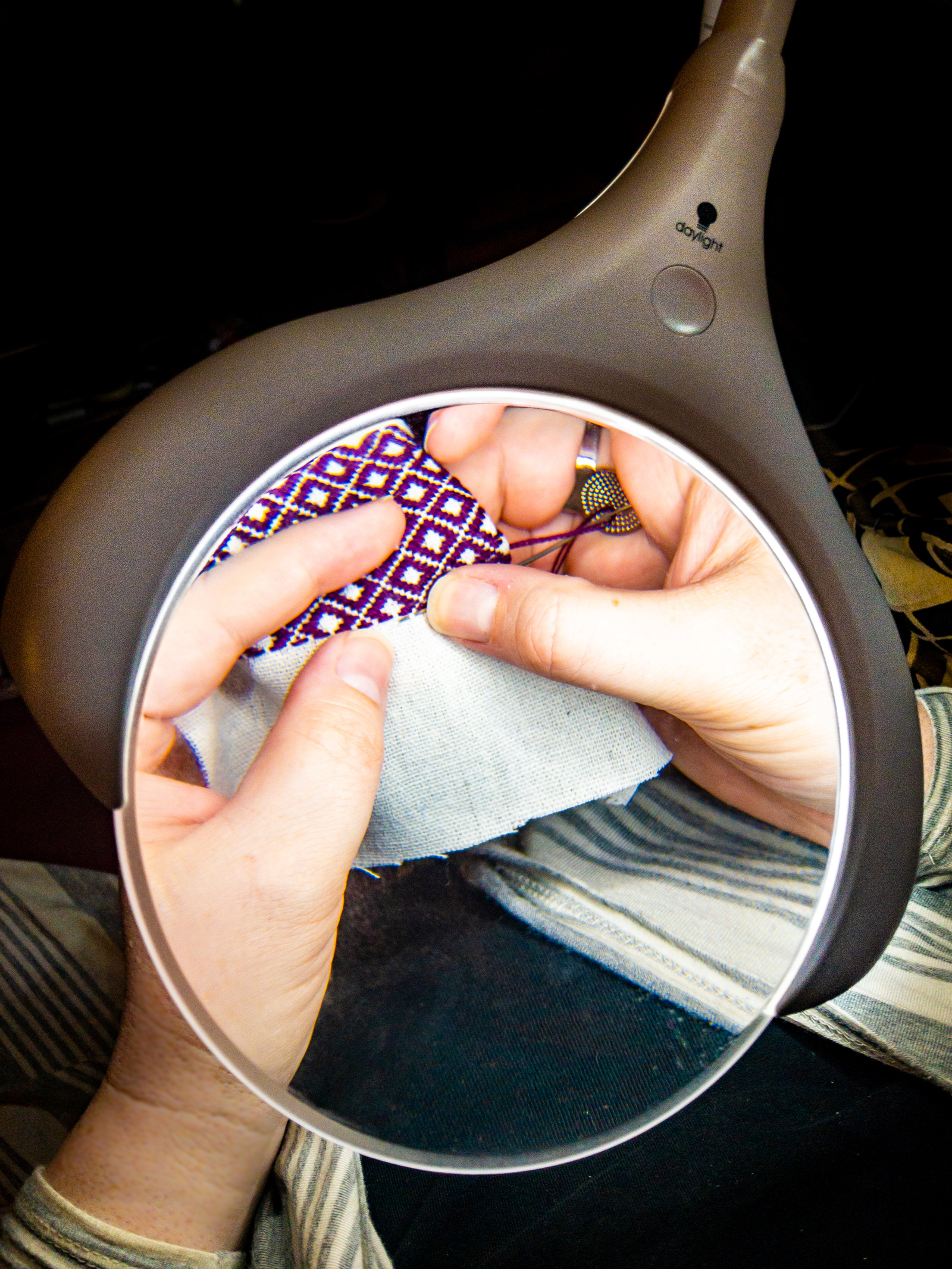
As we said, we consider this a teaching book; as such, we assume that some our readers will be new to the process and will need projects with concentration levels allowing you to practice your unshin while at the same time creating something exciting… we got you covered!
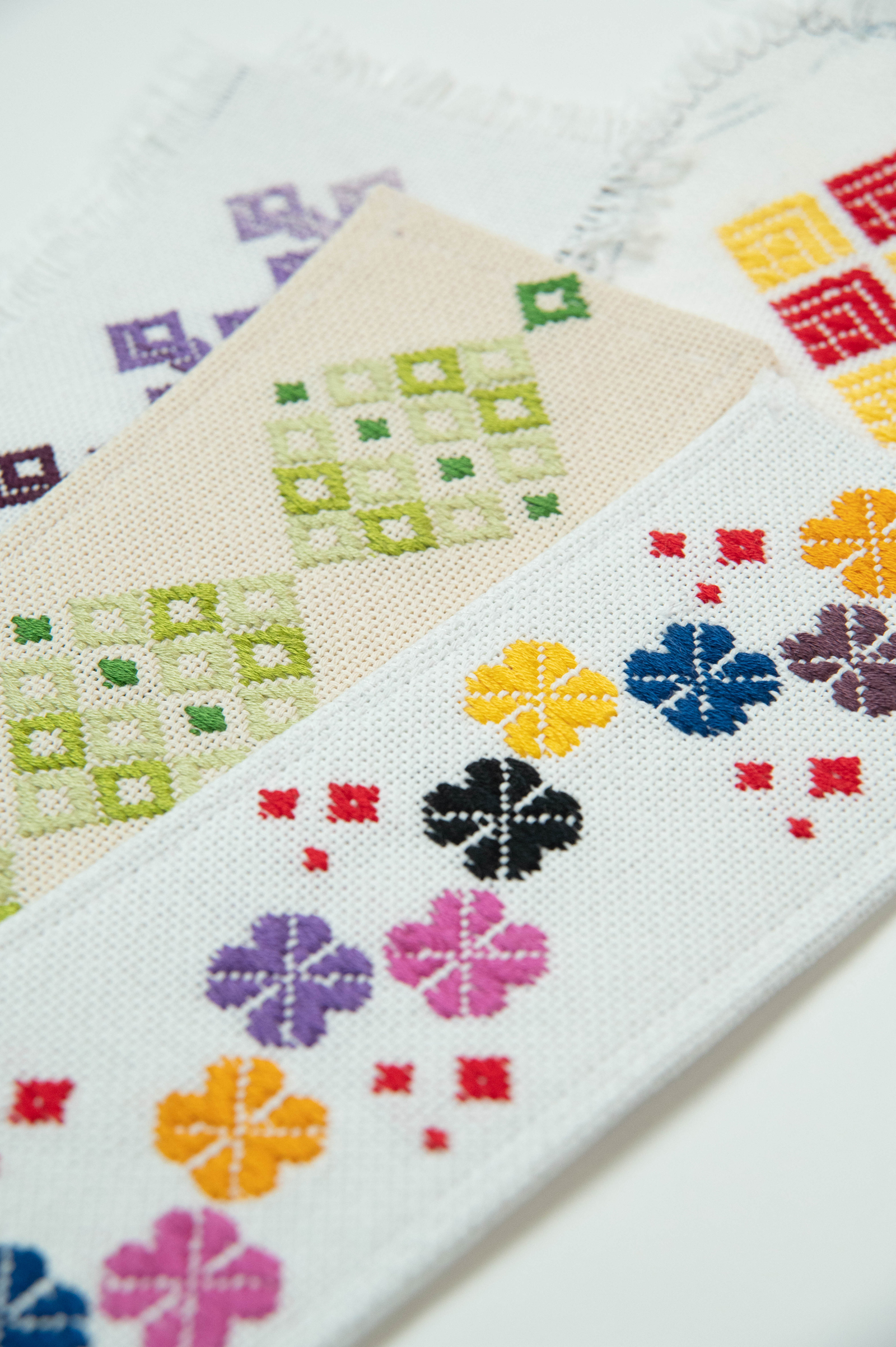

Start by making the unshin practice pattern, then move on to playing with making some of the base modoko to get your rhythm down. And don’t worry that all these little practice pieces will go unappreciated. Your practice pieces can be used in projects like the bookmarks and coasters that are quick to stitch up but are oh so satisfying and useable.
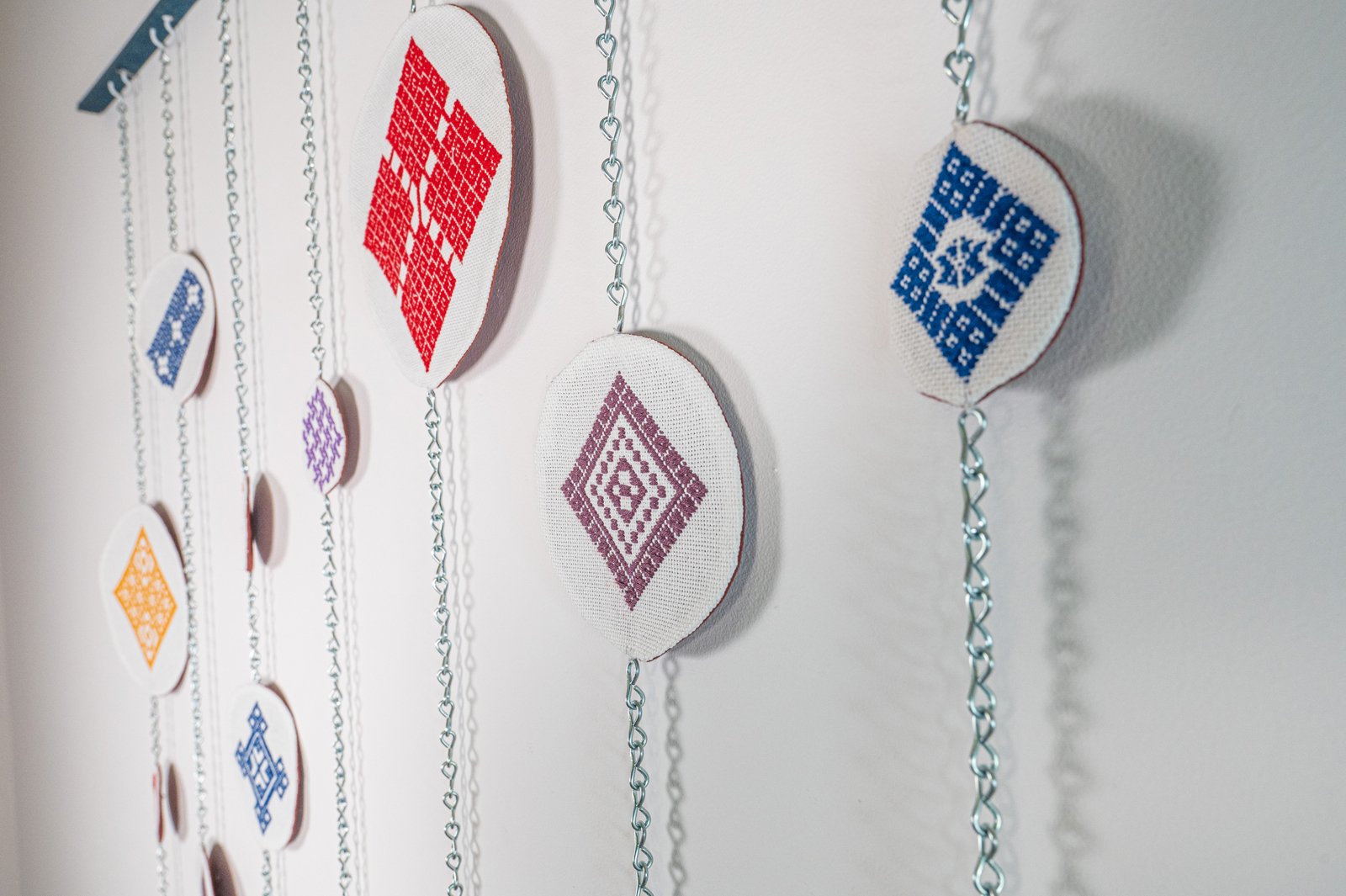
For something a bit more adventurous, the Wall Hanging project is perfect for practicing different levels of motifs because it is constructed only from these individual modoko in different combinations. As soon as you make your first test pieces, you can use them individually or group them together into one statement piece. We also designed these projects so you could use the same motifs and designs we did and advance your stitching skills.
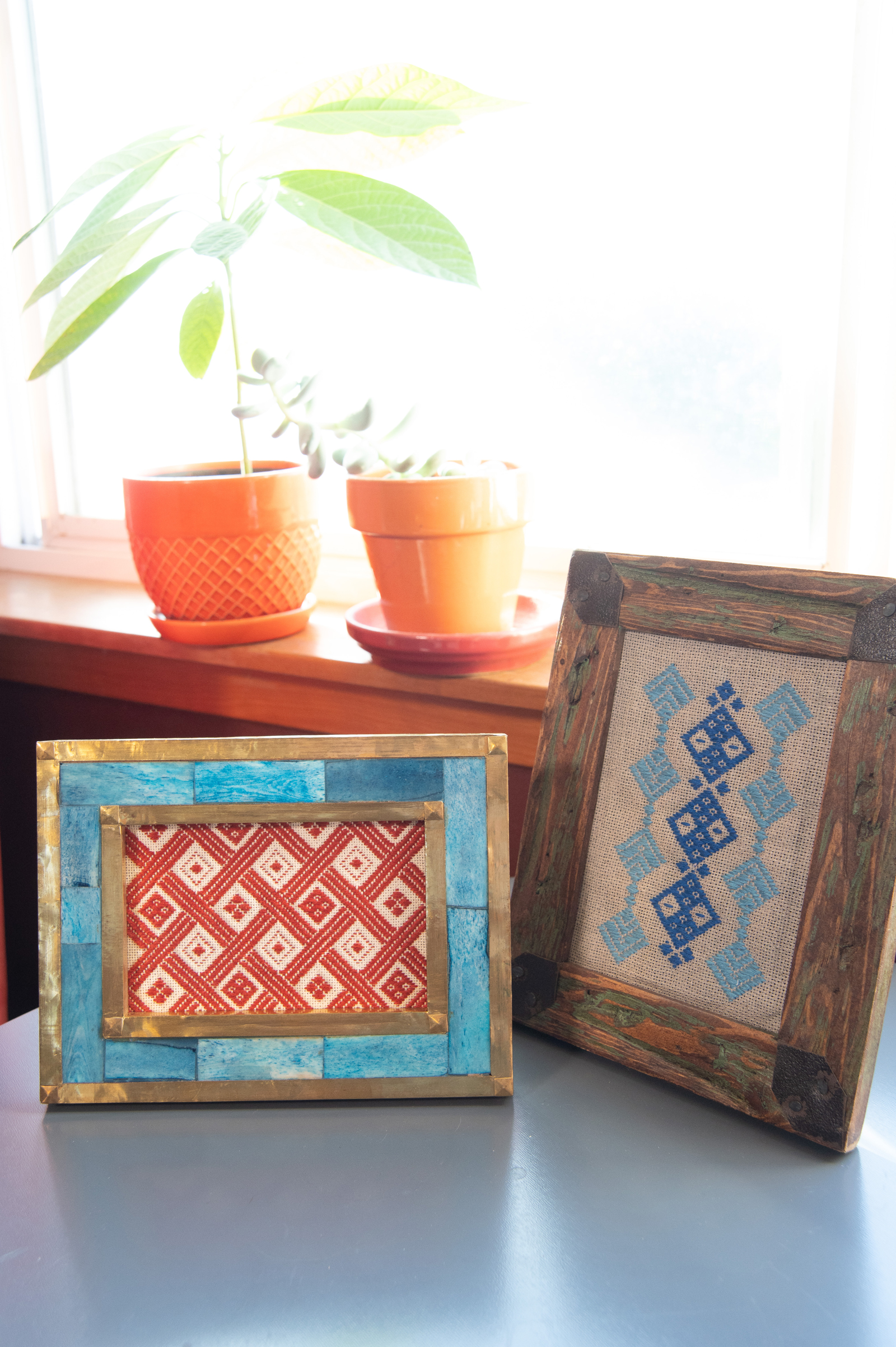
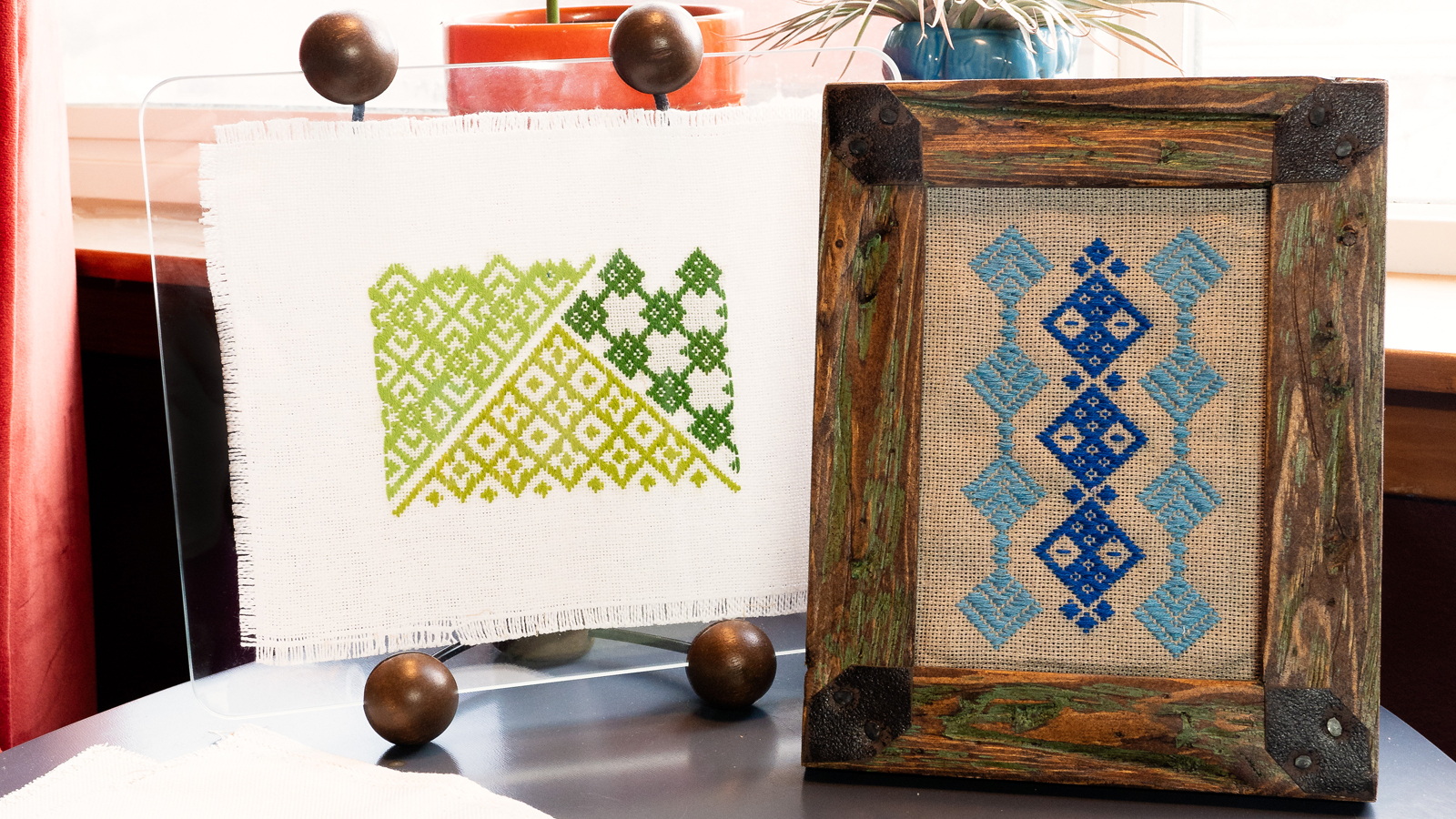
We also love taking these smaller pieces and framing them the way we did in the Framed Art pieces. We do this a lot with all our textile projects that we aren’t necessarily sure what to do with them yet. We really like them but don’t have a definite idea about what to use them for, but we don’t want them to languish in the bottom of a project box. So, follow along with the projects exactly how we designed them or work on your own versions; it’s up to you and what makes your creative eye happy. Embrace your own creative chaos! We certainly do.
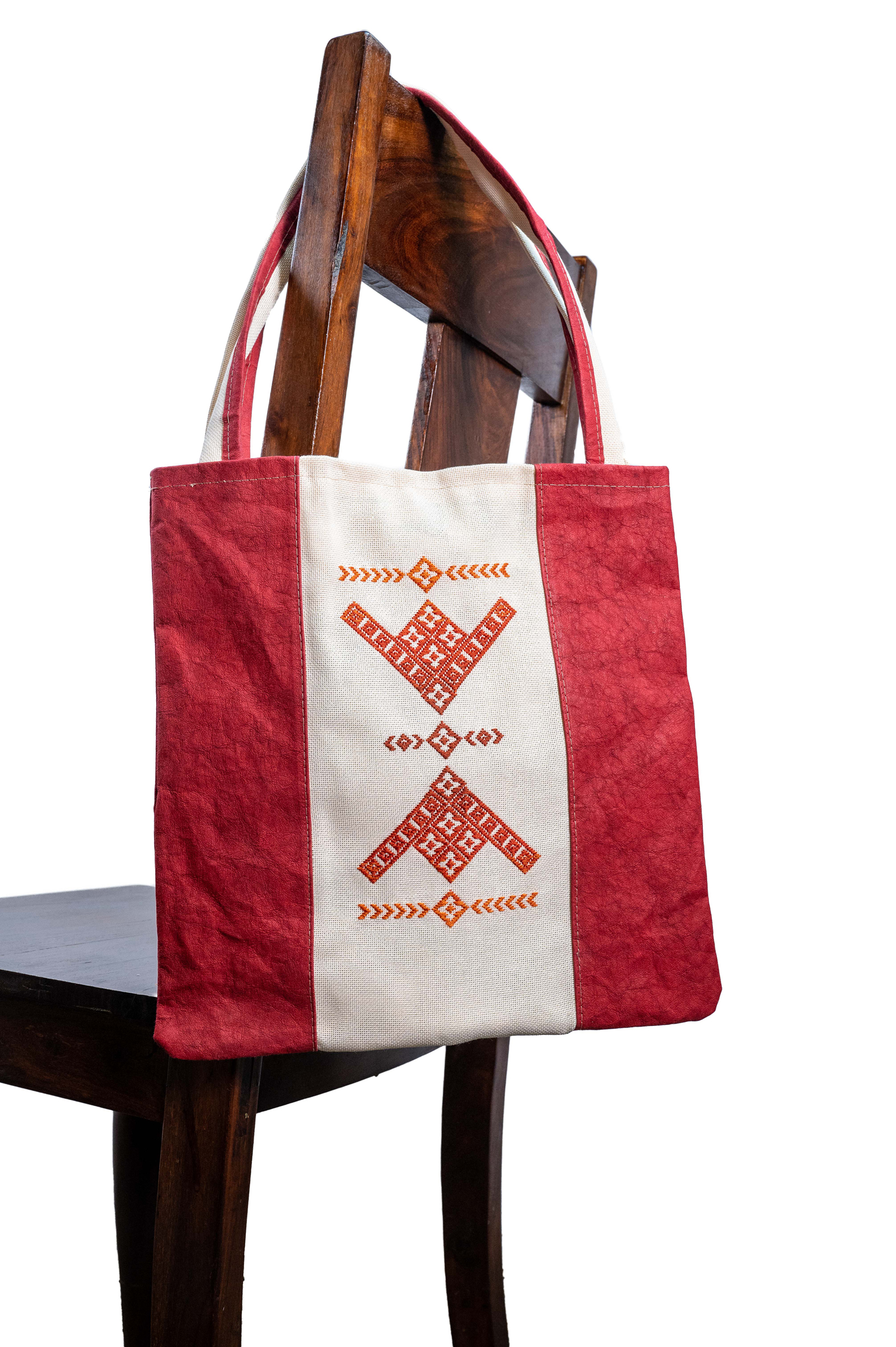
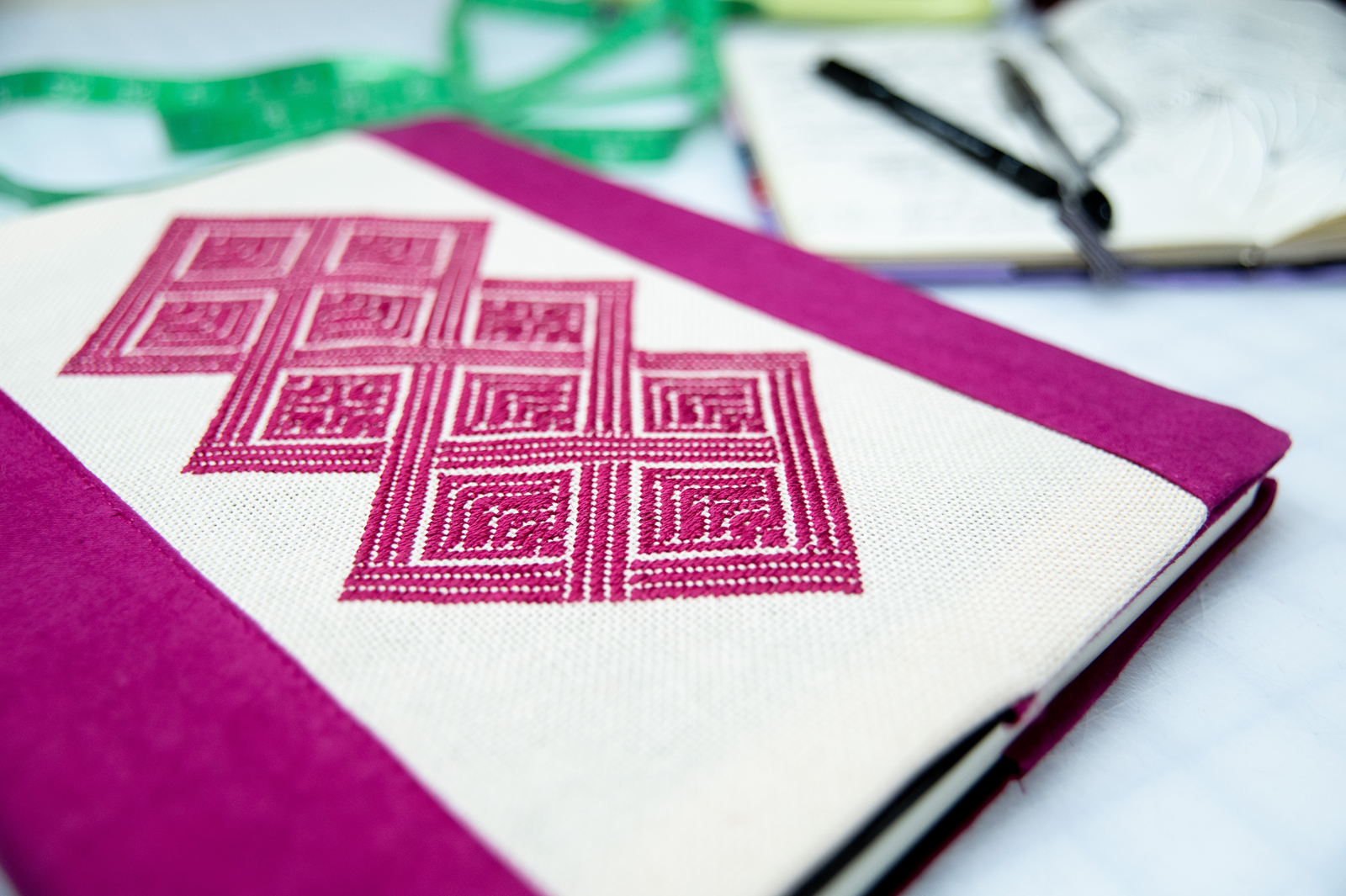
Looking for the perfect travel project to take on holiday or want something you can work on between other projects to cleanse your maker palette? Don’t we all? We have that! Try your hand at an ornamental piece of framed art, designer pillow, tote bag, or personalized book cover.
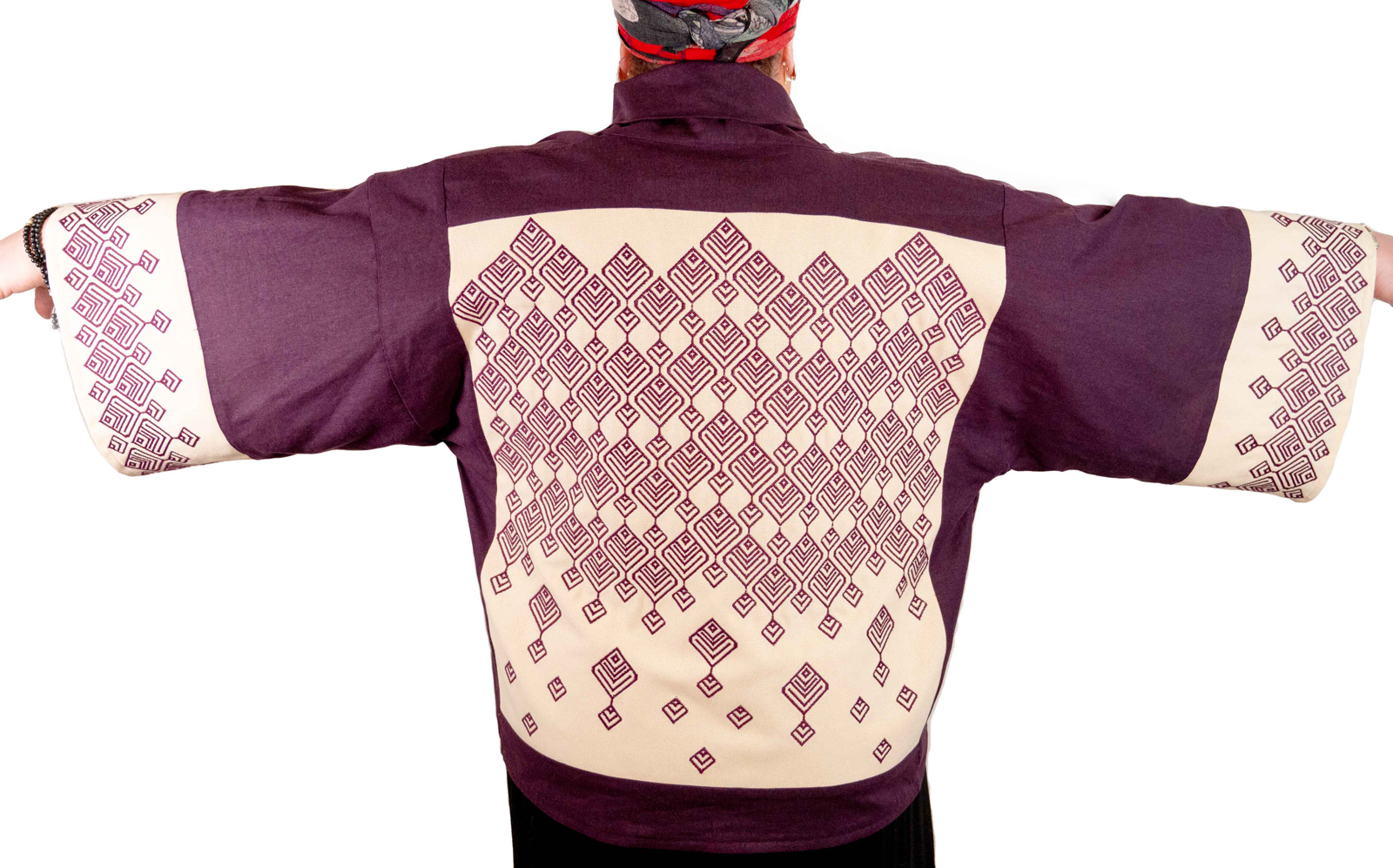
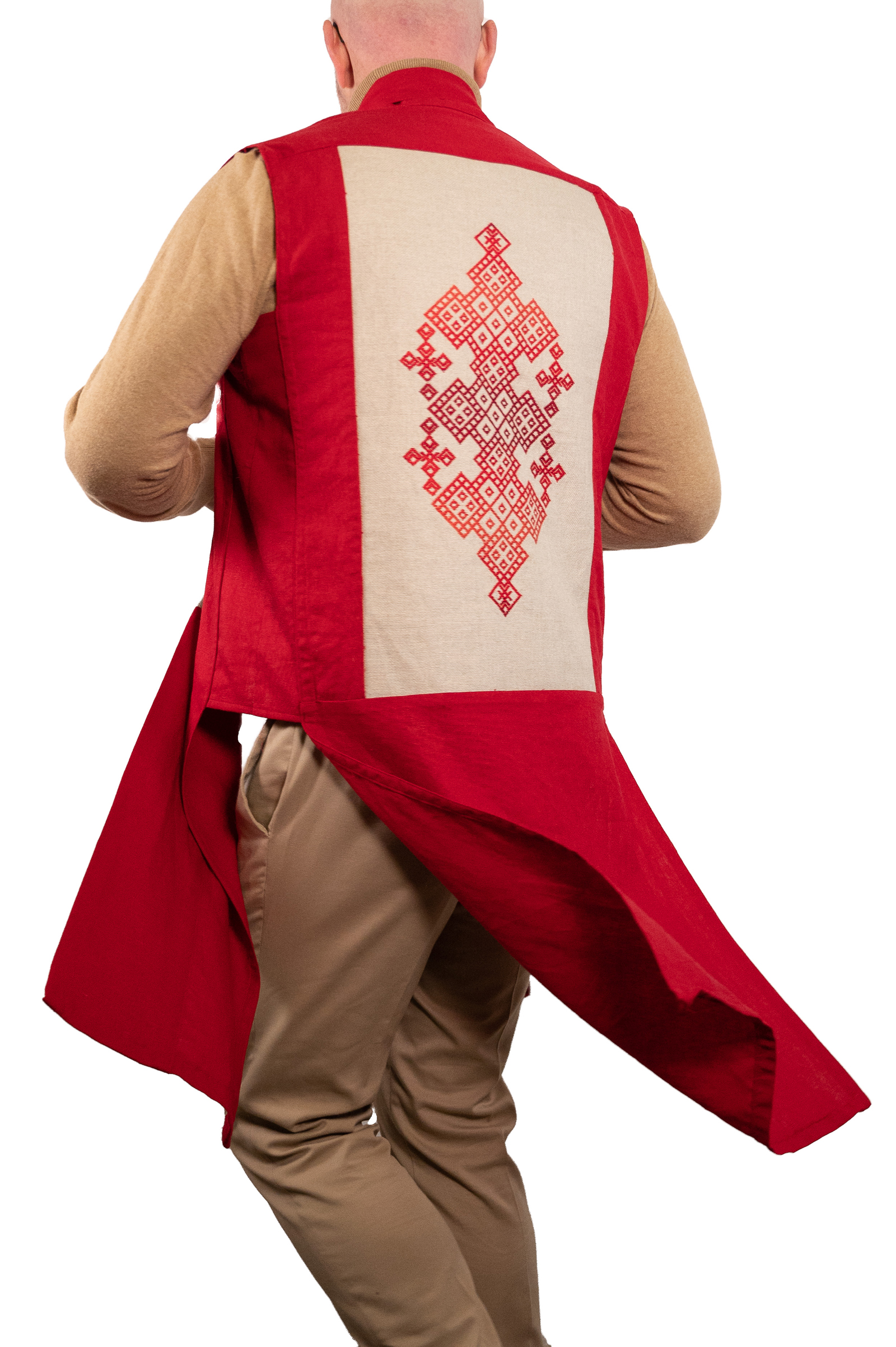
We also include a couple of show-stopper pieces for the adventurous stitcher: the Sashiko Vest and Peacock Jacket. The stitch patterns for these pieces will really show off your skills! Both garment patterns follow a traditional Japanese style of construction with simple shapes that are easily assembled for a customized garment, and both promise to turn heads when you walk in the door. Each garment pattern is sized for a wide range of body types, 5X-S, and includes detailed instructions for cutting and sewing. Even if you are not familiar with garment making, we make it easy for you by including full schematics for all sizes so you can customize the fit of your vest or jacket to your liking.
Materials
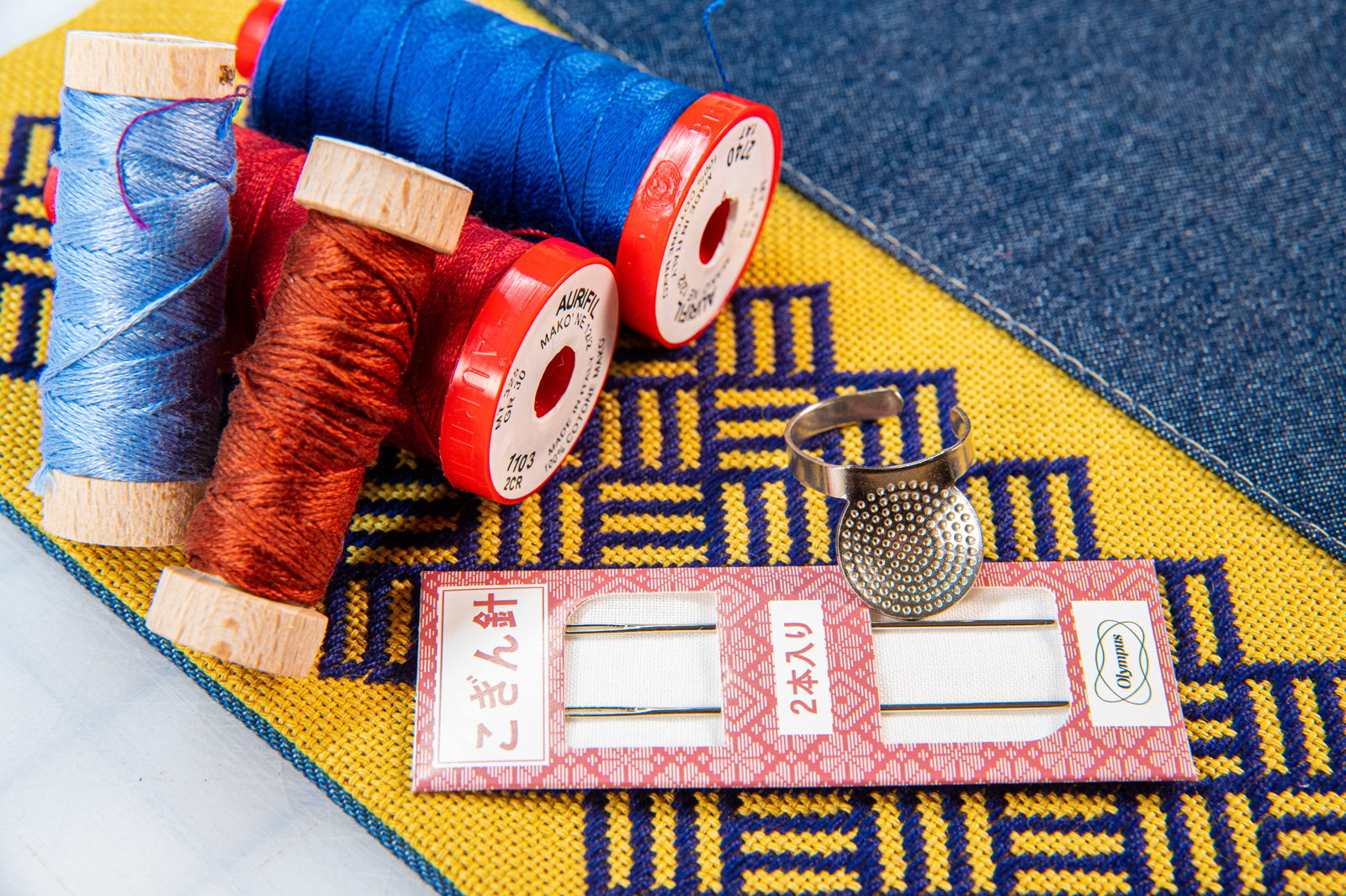
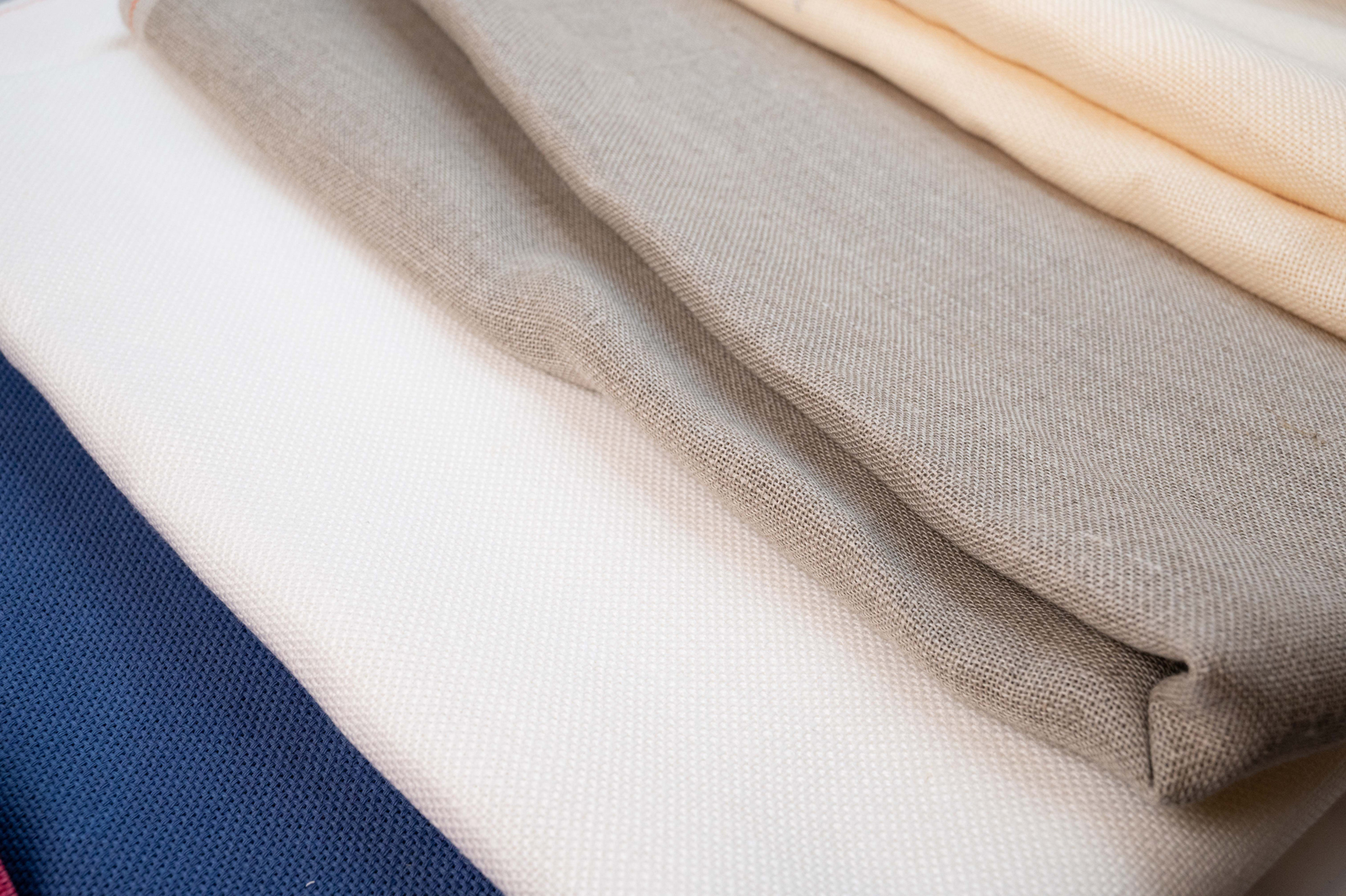
Speaking of making things easier for you, from our own experiences we know evenweave is not the easiest commodity to come by in large amounts or any variety. That’s why we made the decision to stock and sell the evenweave fabric we used in this book.
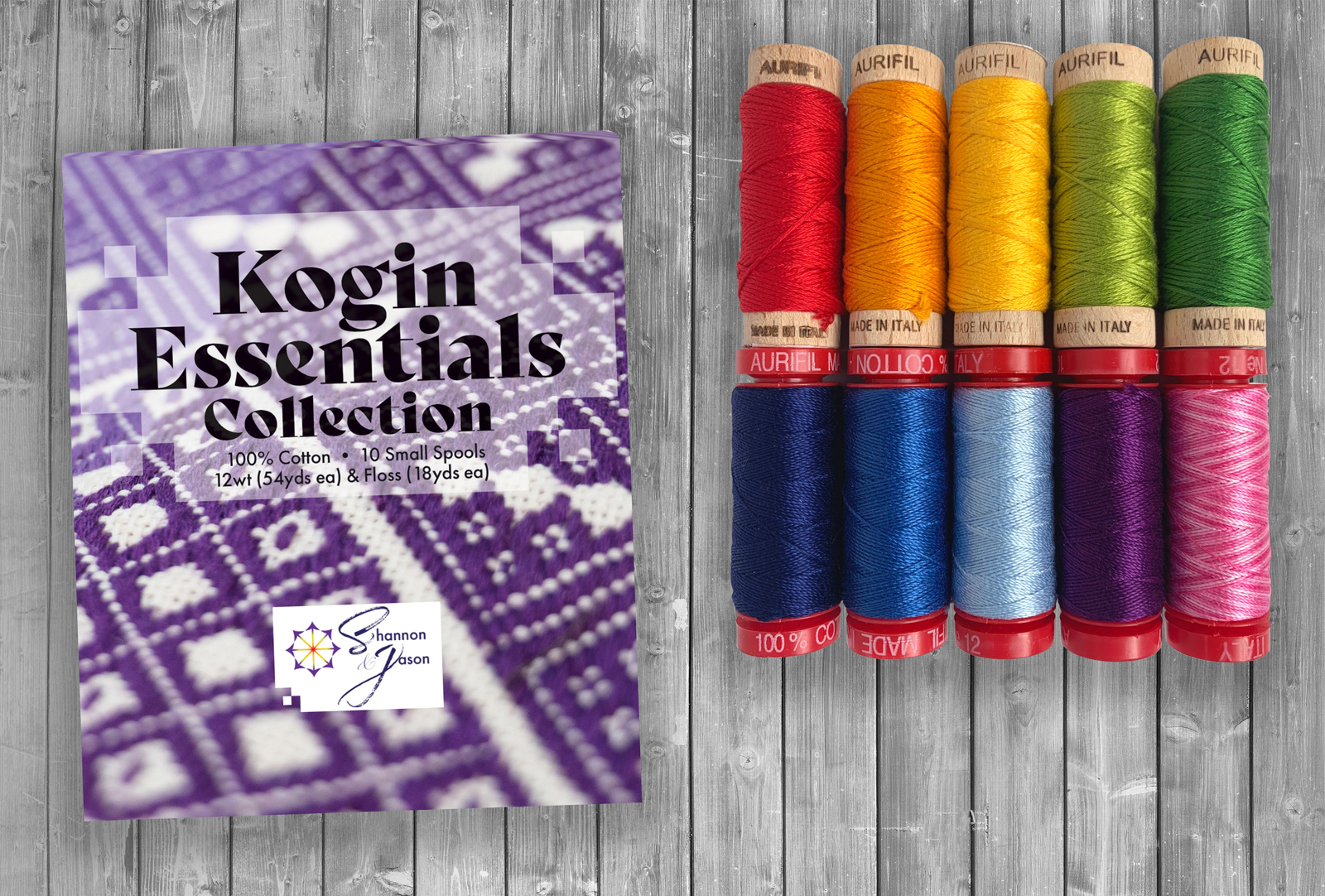
We also worked with the folx at Aurifil to create a new collection of the 12 wt thread and floss we used in the book. This is our third collection with Aurifil, and we LOVE LOVE LOVE how it turned out. Be sure to stop by our site and pick up your thread and fabric when you pre-order your signed copy of this book!
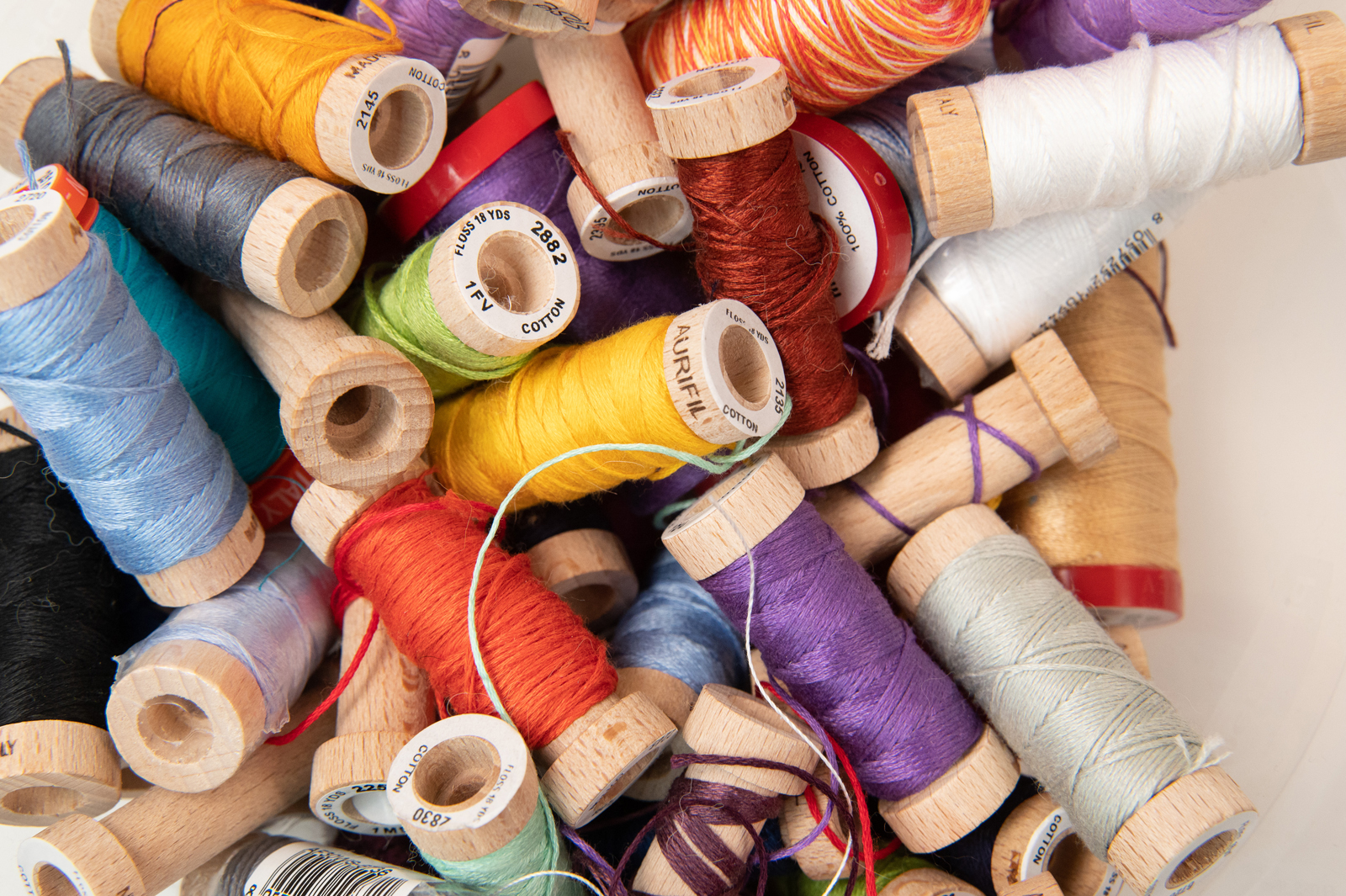
A Final Word (or two)
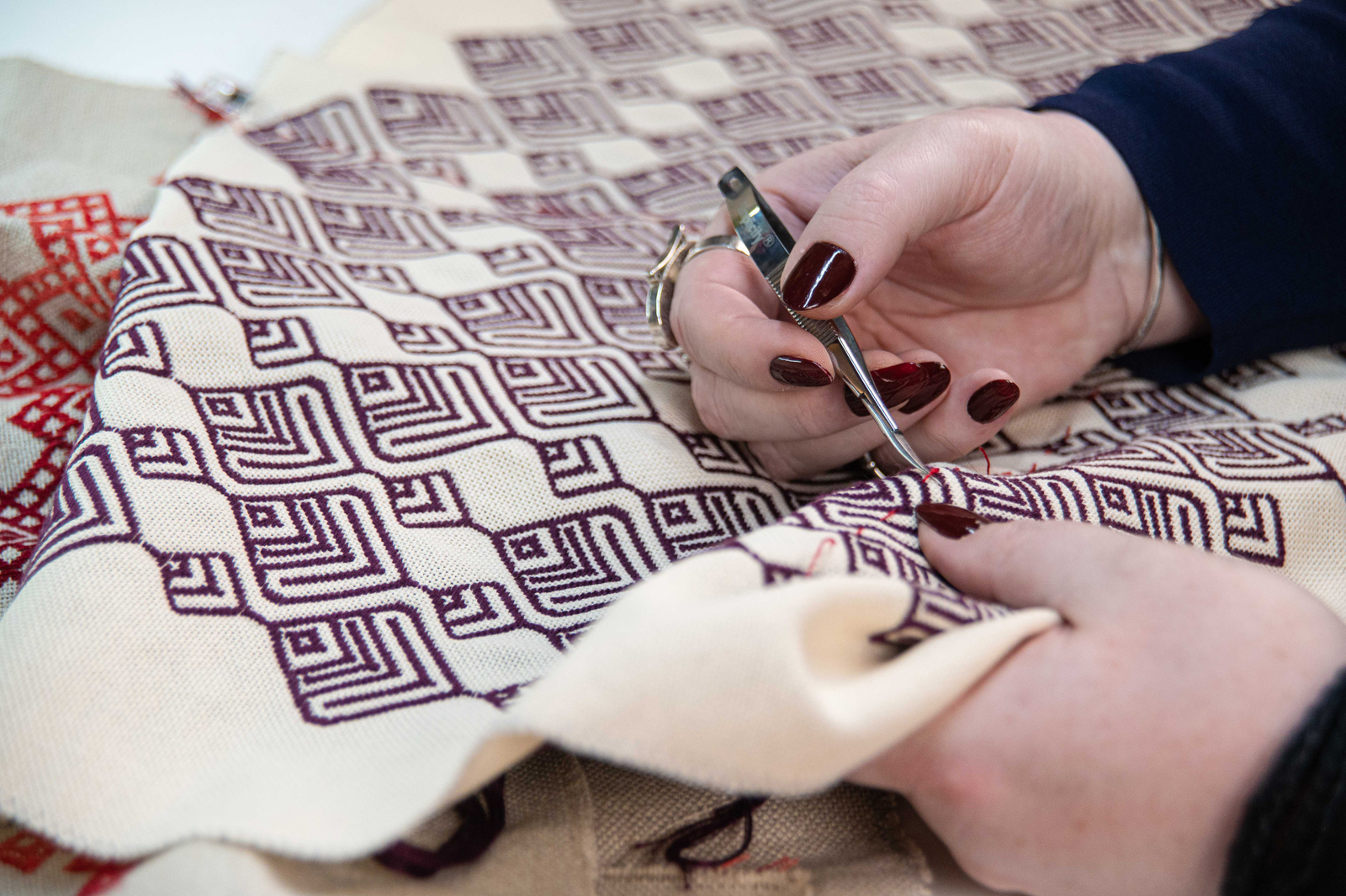
From beginning to end, we poured every ounce of our excitement for the art of kogin-zashi into this book for you all. In addition to the teaching elements and the projects, we once again included Jason’s gorgeous photos of our projects and stitch patterns, and he did his usual meticulous job creating the charts and schematics for the stitch patterns and projects. (This is Shannon writing this part, by the way, and yes, I’m going to brag on him just a little bit.) Combine that with the work from the C&T editing and design teams and we are BEYOND thrilled with how this book turned out. Check out the preview photos and we created a book preview video for y’all to watch too.
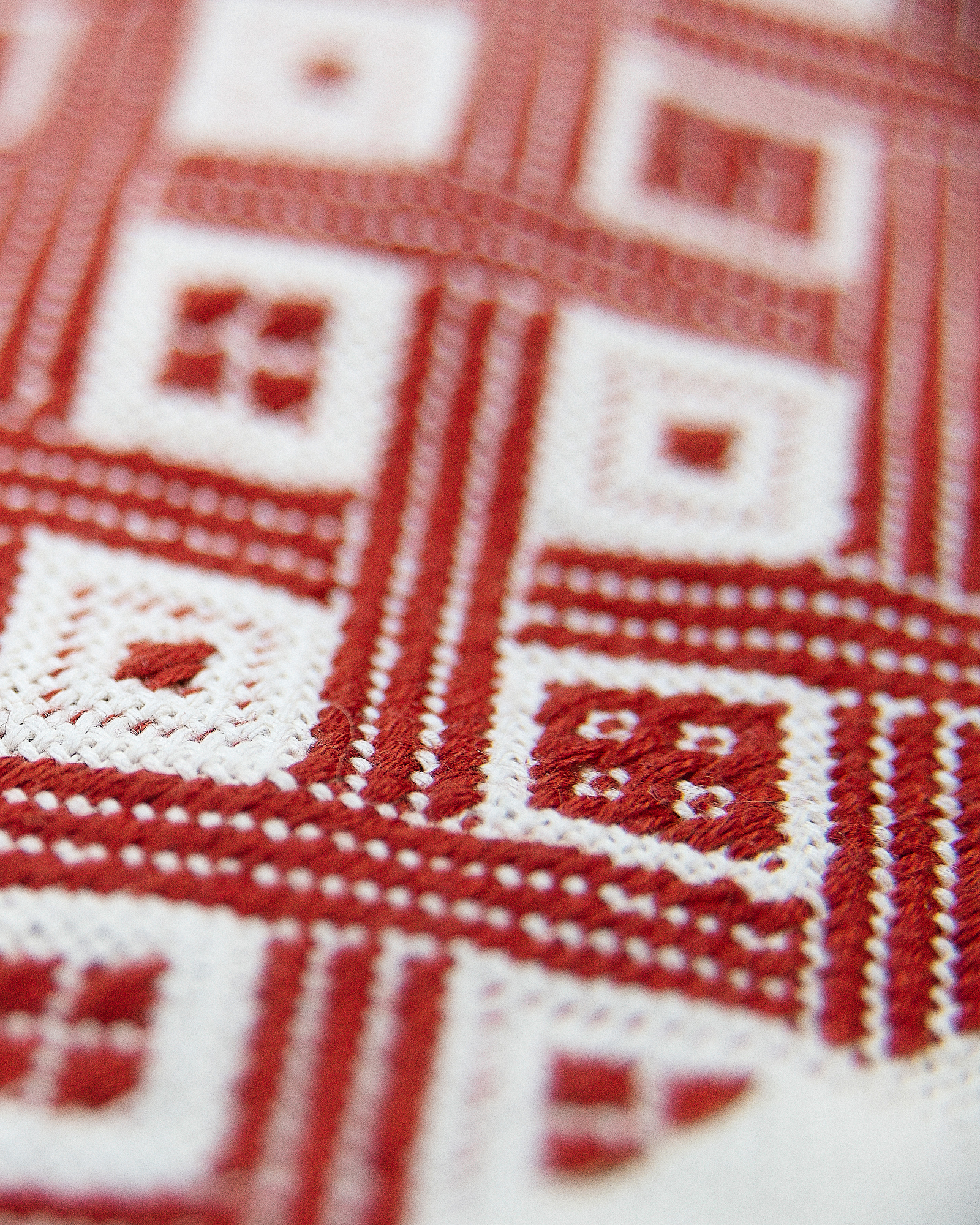
When fingering through your copy of Contemporary Kogin-zashi: Modern Sashiko Beyond Filling in the Gaps remember looks can be deceiving. Although the most intricate kogin-zashi designs might look overwhelming, they are just created using a higher degree of concentration and the base modoko. With a little practice and our book to assist you, we promise you can do this! Grab your pre-order today so you are first to receive your copies and, if you would like for us to sign a copy for you, head to our site at shannonandjason.com and place your pre-order with us.
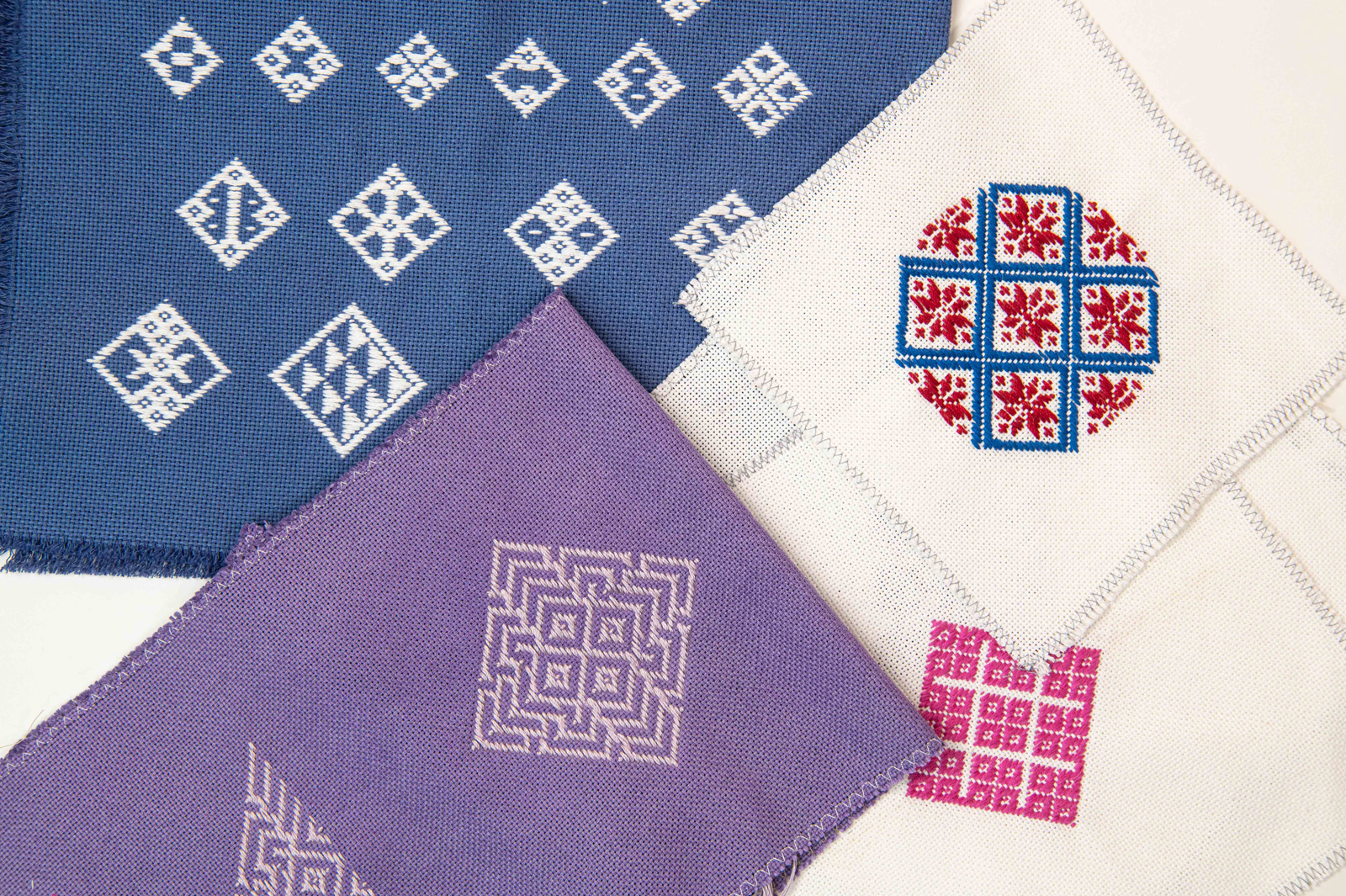
Oh… and there will definitely be opportunities for you to work along with us via our kogin-zashi classes right here on Creative Spark. We have a full series of classes planned as well as individual make along and project workshops. Keep an eye on our Creative Spark page for those and it doesn’t hurt to subscribe to our newsletter and the Creative Spark newsletter to make sure you don’t miss anything.
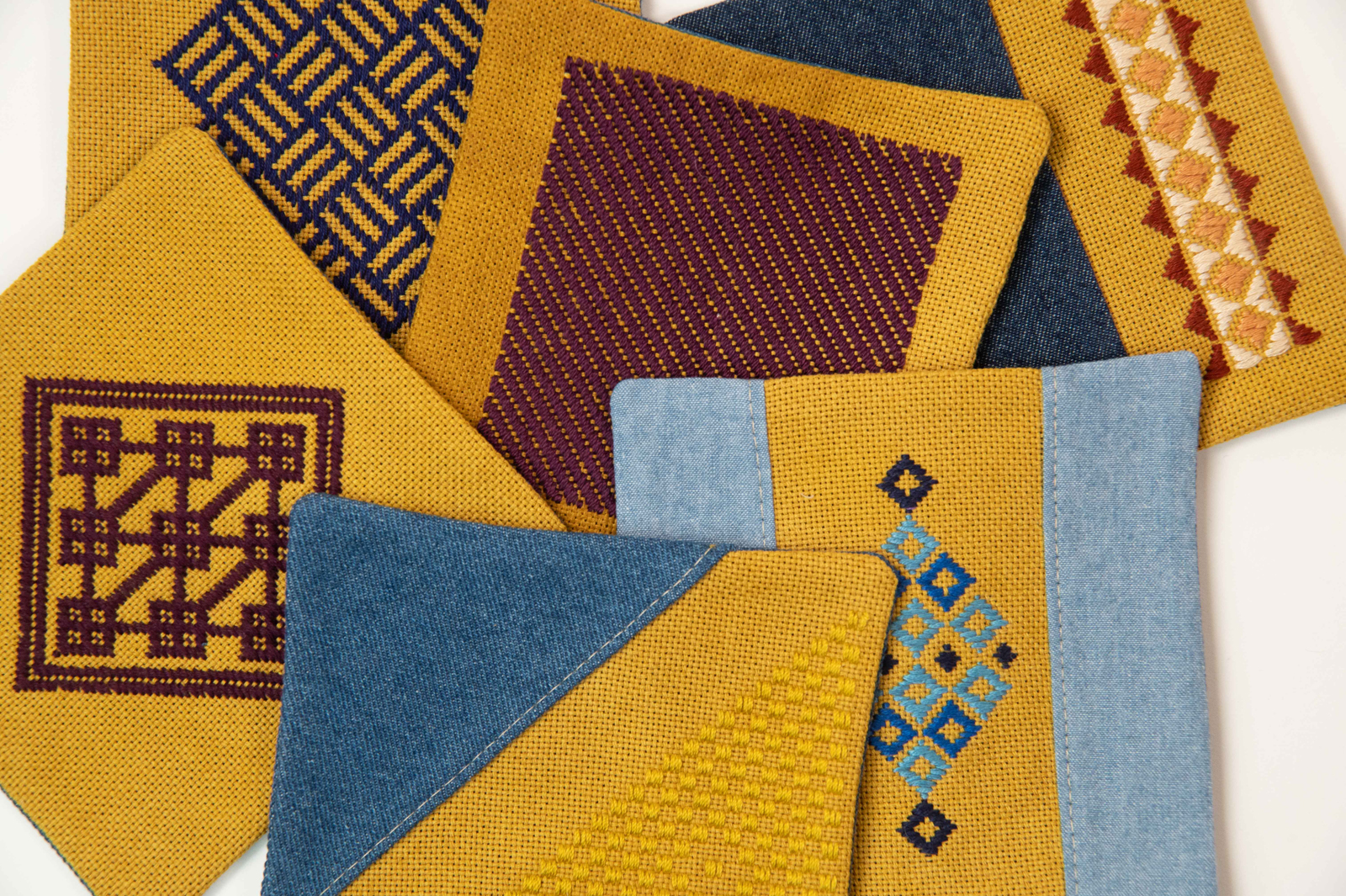
That’s all for us… for now. Thanks so much for hanging out with us today and for coming along with us on this journey of discovery and exploration. There is more content to come! We hope you will take a little time out to explore kogin-zashi for yourself and see exactly why this ancient artform remains a cultural asset and over the past decade has become a worldwide phenomenon. Did y’all click the pre-order button yet? Go ahead… we’re done now…
STITCH ON!!
S&J


